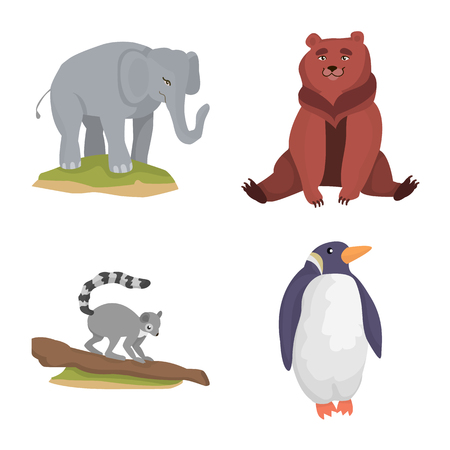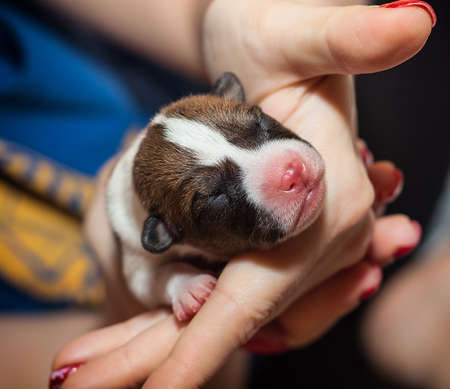Understanding Why Exercise Matters for Small Pets
When it comes to small pets, regular exercise isn’t just a bonus—it’s essential for their overall health and well-being. Whether you have a rabbit, hamster, guinea pig, or ferret, these little animals need physical activity to stay fit and happy. Exercise helps maintain a healthy weight, supports heart health, and encourages natural behaviors like digging, running, or climbing. Without enough movement, small pets can quickly develop problems such as obesity, muscle weakness, and even depression. In fact, a sedentary lifestyle is one of the leading causes of behavioral issues in small animals. Boredom and pent-up energy often lead to destructive habits like chewing on cage bars or excessive grooming. Giving your pet opportunities to move around daily not only keeps them physically strong but also mentally sharp and emotionally balanced. By understanding why exercise matters so much, you’re taking the first step toward being a responsible and loving small pet owner.
2. How Much Exercise Do Small Pets Really Need?
Every small pet has its own unique exercise requirements, and understanding these differences is key to keeping your furry friend healthy and happy. Below, we break down the recommended daily exercise for some of the most popular small pets in American households, highlighting what makes each species special when it comes to staying active.
| Species | Recommended Daily Exercise | Unique Needs & Notes |
|---|---|---|
| Rabbits | 3+ hours outside their cage | Need lots of space to hop, stretch, and explore; supervised playtime in a bunny-proof area is essential. |
| Guinea Pigs | 1-2 hours outside their cage | Enjoy floor time with tunnels and hideouts; sensitive to temperature and drafts so indoor play is best. |
| Hamsters | Varies (30 min – 1 hour) | Nocturnal—active mostly at night; love running wheels and tunnels inside secure enclosures. |
| Ferrets | At least 2 hours out-of-cage time | Highly curious and energetic; need interactive toys and a ferret-proofed space to avoid escapes. |
| Rats | 1+ hour outside their cage | Social animals who thrive on climbing, exploring, and puzzle toys; benefit from human interaction during play. |
The bottom line: While all small pets need daily opportunities for movement, the type and amount of activity varies significantly by species. Rabbits need room to leap, guinea pigs require gentle floor time, hamsters are night owls with a love for wheels, ferrets need adventure, and rats crave social enrichment. Tailoring exercise routines to each pet’s instincts ensures better physical health—and a happier companion.

3. Species-by-Species: Best Ways to Keep Your Pet Active
Every small pet is unique—not just in personality, but also in their exercise needs and preferences. Here’s how you can help your specific little companion stay active, healthy, and happy with activities that are both fun and safe.
Rabbits
Rabbits love to hop, run, and explore. Give them a bunny-proofed room or playpen for at least 3-4 hours each day outside their cage. Cardboard boxes, tunnels, and ramps encourage natural jumping and hiding instincts. Always supervise to prevent chewing on electrical cords or furniture.
Guinea Pigs
Guinea pigs benefit from daily floor time—ideally one hour or more. Create a safe play area with hideouts, soft tunnels, and scattered veggies for foraging. Avoid exercise wheels or balls; they can harm guinea pigs’ spines and feet.
Hamsters & Gerbils
These energetic little critters thrive on variety. Provide a solid-surface exercise wheel (not wire) sized appropriately for their species. Add climbing toys, cardboard tubes, and multi-level habitats to promote exploration and activity during their nighttime hours.
Ferrets
Ferrets need at least two hours of supervised playtime outside their cage daily. Set up a ferret-proofed area with tunnels, balls, and interactive toys. Rotate toys regularly to keep things interesting. Hide treats for them to seek out—it’s great mental exercise too!
Birds (Parakeets, Cockatiels, etc.)
Small birds require both physical and mental stimulation. Offer out-of-cage flying time in a safe room whenever possible. Inside the cage, provide ladders, swings, perches of different sizes, and puzzle feeders to encourage movement.
Small Reptiles (Turtles, Geckos)
While reptiles may not “exercise” like mammals, they still need enrichment! Rearrange rocks or logs in their habitat for climbing opportunities. For turtles, a shallow water area for swimming is ideal. Always research your reptile’s natural behavior before introducing new activities.
Safety First
No matter the species, always supervise your small pet during out-of-cage time and use pet-safe materials for any DIY toys or play areas. Tailoring exercise routines to your pet’s natural behaviors is the best way to keep them physically fit and mentally sharp.
4. Safe Spaces for Play: Setting Up Your Home for Pet Exercise
Creating a safe and engaging play space is essential for the well-being of your small pet. Whether you have a rabbit, guinea pig, hamster, or ferret, each species has unique needs when it comes to exercise and safety. Here’s how you can pet-proof your home, pick the right toys, and foster an environment that inspires healthy activity without risking your furry friend’s safety.
Pet-Proofing Your Play Areas
Small pets are curious explorers, so it’s important to remove hazards from their exercise zones. Start by blocking off access to electrical cords, sharp objects, toxic plants, and small spaces where they could get stuck. Cover any gaps under furniture and use baby gates or playpens designed for pets. Always supervise your pet during playtime outside their enclosure.
Checklist for Pet-Proofing Common Play Areas
| Area | Potential Hazards | How to Pet-Proof |
|---|---|---|
| Living Room | Cords, small décor, recliners | Hide cords, remove tiny items, block under sofas/chairs |
| Kitchen | Chemicals, food scraps, appliances | Keep doors closed, secure trash cans, avoid access during cooking |
| Bedroom | Shoes with laces, jewelry, clothing piles | Store items in closets/drawers, check under beds regularly |
| Bathroom | Cleaning products, water sources | Close toilet lids, store chemicals up high or behind locked doors |
Choosing the Right Toys for Each Species
Toys are more than just fun—they stimulate natural behaviors and keep pets active. Make sure toys are appropriately sized and made from non-toxic materials. Avoid anything with small parts that could be swallowed or sharp edges that could injure them.
| Species | Recommended Toys/Activities | Avoid These Items |
|---|---|---|
| Rabbits | Tunnels, chew-safe wood blocks, digging boxes | Toys with glued parts or loose threads |
| Guinea Pigs | Tunnels, hideouts, hay balls to push around | Balls with bells inside (can trap toes) |
| Hamsters/Gerbils | Exercise wheels (solid surface), tubes/mazes, climbing ladders | Scented plastic toys or mesh wheels (toe injuries) |
| Ferrets/Rats | Bounce balls (large enough not to swallow), tunnels, soft ropes for climbing | Toys with foam filling or stuffing they can ingest |
Create an Environment That Encourages Activity Safely
You don’t need a ton of space to help your small pet stay active—just some creativity and thoughtful setup. Rotate toys regularly so they stay interesting. For burrowing species like hamsters and gerbils, provide plenty of bedding material for digging. For climbers such as ferrets or rats, offer multi-level platforms and hanging bridges. Always ensure there’s fresh water available in every play zone. Most importantly: never leave your small pet unsupervised in a new area until you’re sure it’s completely safe.
Your effort to create a stimulating yet secure environment pays off every day in your pet’s energy and happiness. Small steps make a big difference in their quality of life!
5. Recognizing When Your Pet Needs More (or Less) Exercise
Understanding your small pet’s exercise needs is only half the battle—knowing when to adjust their routine is just as important. Each species and individual animal has its own way of showing if it’s getting too little or too much activity. Paying close attention to both behavioral cues and physical changes can help you keep your furry friend healthy and happy.
Behavioral Signs of Under-Exercise
If your pet isn’t getting enough exercise, you might notice increased restlessness or boredom. For example, rabbits may start chewing furniture or cage bars, while hamsters could become more aggressive or hyperactive during playtime. Guinea pigs and ferrets might show signs of lethargy, excessive sleeping, or even depression. Look for repetitive behaviors like pacing or digging that signal pent-up energy.
Physical Changes to Watch For
Lack of exercise can also show up physically. Weight gain, overgrown nails (from not enough natural wear), or poor muscle tone are red flags across species. Some pets might develop digestive issues or a dull coat if they’re inactive for long periods. If your pet seems sluggish or avoids movement altogether, it’s time to reassess their daily routine.
Signs of Over-Exercise
On the flip side, too much exercise can lead to problems like limping, excessive panting (especially in small mammals), loss of appetite, or irritability. Hamsters and gerbils may hide more than usual, while rabbits could be less willing to interact. Watch for signs of fatigue—such as lying down frequently during play—or any unusual reluctance to move.
Adjusting Your Routine
If you spot signs that your pet needs more activity, gradually increase play sessions or enrich their environment with new toys and challenges. For over-exercised pets, give them extra rest days and reduce the intensity or duration of playtime. Always make changes slowly so your pet can adapt without stress.
When in Doubt, Consult a Vet
If you’re unsure whether your pet’s behavior or appearance is linked to exercise levels, consult a veterinarian who is familiar with small animals. They can offer advice tailored to your specific species and help create an exercise plan that fits your pet’s unique needs.
6. Exercise Dos and Donts: Tips for Busy Pet Parents
Keeping your small pet active doesn’t have to be overwhelming, even if your schedule is packed. Here are some smart strategies and reminders to help you balance a busy lifestyle while making sure your furry, feathered, or scaled friend gets the movement and stimulation they need.
Do: Make the Most of Your Time
Schedule Short, Frequent Sessions: Break exercise into smaller chunks throughout the day. Five-minute playtimes can add up, whether it’s tossing a ball for your ferret before work or letting your rabbit roam in a safe space during your lunch break.
Use Interactive Toys: Invest in toys that encourage self-play—like treat puzzles for rats or spinning wheels for hamsters—to keep pets occupied and moving even when you’re not home.
Don’t: Forget Supervision and Safety
Avoid Unsafe Spaces: Always supervise out-of-cage time. Small pets can squeeze into tight spots or chew on dangerous wires. Designate a pet-safe area with barriers to prevent accidents.
Don’t Overdo It: Too much exercise can stress small animals. Know your species’ limits and watch for signs of fatigue, like heavy breathing or hiding behavior. If you’re unsure, consult your vet.
Creative Solutions for Busy Days
Enlist Family Members: Assign each person in the house a daily “pet duty” to ensure everyone gets quality time with your pet—and your animal gets consistent interaction.
Set Up Rotating Enrichment: Change up toys and tunnels regularly to keep things fresh and exciting for your pet. Even rearranging cage accessories can spark curiosity and encourage movement.
Cautionary Advice
Remember, not every activity suits every species. For example, running balls may be fun for hamsters but unsafe for guinea pigs due to their body structure. Research what works best for your particular pet and always prioritize their comfort and well-being over convenience.
If you’re pressed for time but want to do right by your little buddy, consistency is key. Small efforts every day build lasting health habits—and a happier pet—without needing hours at a stretch.


